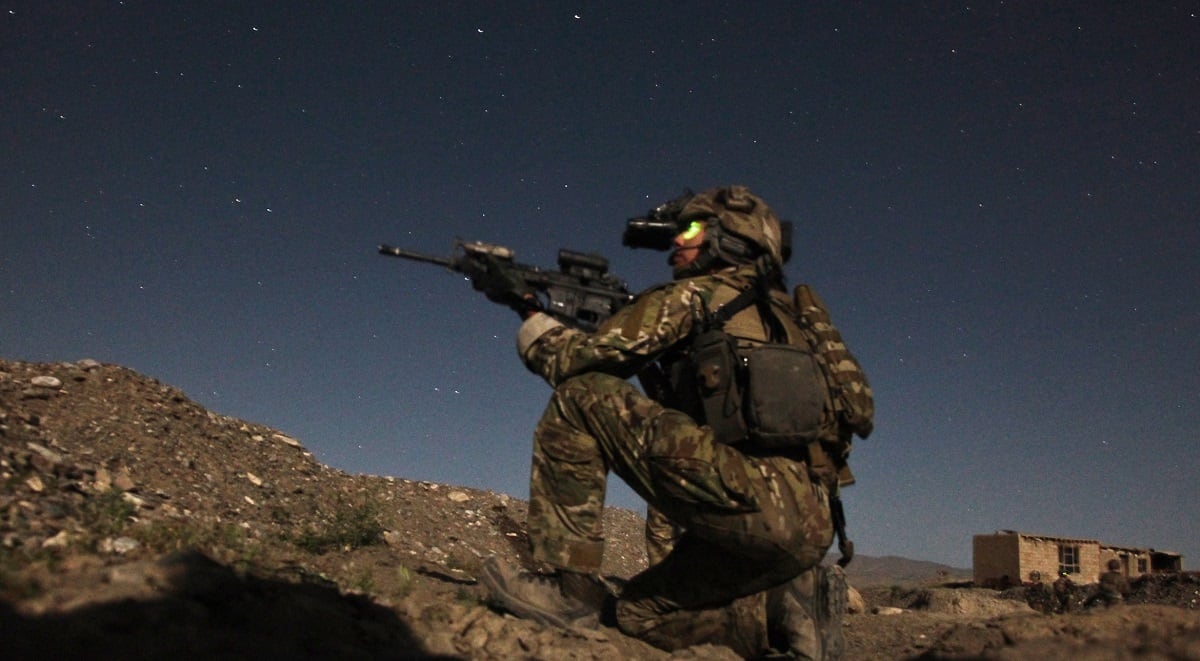In what could be a sign of the campaign’s success, U.S. Forces-Afghanistan recently announced that its efforts to stem Taliban financing by bombing narcotics facilities has expanded beyond southern Afghanistan.
Many of the U.S. airstrikes previously focused on the poppy-rich province of Helmand, in the south of the country. But last week, 11 Taliban narcotics production facilities were struck in Farah and Nimroz provinces, located in the country’s western portion, according to a press statement from U.S. Forces-Afghanistan.
The strikes were carried out by U.S. forces flying F-16s, A-10s and MQ-9s, and were the first to occur in western Afghanistan against Taliban revenue streams since the drug lab bombing campaign began.
“These efforts have deprived the Taliban of an estimated $200 million in revenue and have demonstrated that Afghan and U.S. forces can strike Taliban-associated narcotics production operations no matter where they are,” Army Col. Lisa Garcia, Resolute Support spokeswoman, told Military Times.
U.S. military officials maintain that narcotics production is the Taliban’s primary means of funding its insurgency, although some experts have questioned how much the bombing of drug labs is actually impacting the terror group.
"The Taliban will have no safe havens. We will continue to exploit their networks and decimate their ability to develop narcotics," said Maj. Gen. James Hecker, commander, 9th Air and Space Expeditionary Task Force-Afghanistan. "They have become a criminal organization that profits from selling drugs and using those funds to conduct operations that maim and kill Afghans. By cutting off the Taliban’s economic lifelines, we also reduce their ability to continue these terrorist activities.”
RELATED

The strikes happened just as advisers from Resolute Support’s Train, Advise, Assist Command-West were conducting an Expeditionary Advisory Package with the Afghan National Defense and Security Forces in Farah province.
Those advisory packages are “one part of a multi-pronged strategy” to increase Afghan security forces’ capabilities, Garcia said. “They provide training, advising and assisting to more remote areas of Afghanistan, bringing the training to Afghan military even when their fight is further out.”
The U.S. military has been aggressively pushing the Afghan government toward independence, flaunting the growing skill of Afghan Air Force pilots and Afghan Tactical Air Coordinators — an Afghan version of JTACs, who call in air support from forward locations.

“For operational security purposes we cannot provide any further information about whether or not coalition advisers or Afghan TACs were on the ground for these strikes,” Garcia said.
However, she added that “all coalition airstrikes use tactical air controllers (TAC),” and said that U.S. “advisers for the Afghan Air Force are training, advising and assisting the Afghan's TACs to great effect.”
RELATED

Since the anti-Taliban revenue push kicked off in November, the campaign has conducted 75 strikes against narcotics production facilities in Afghanistan, according to the press statement.
“We will continue to help the Afghan security forces to send a clear message to the Taliban: they will not win on the battlefield,” Hecker said. “The only way they can have a peaceful solution is to sit down and reconcile with the National Unity Government.”
Kyle Rempfer was an editor and reporter who has covered combat operations, criminal cases, foreign military assistance and training accidents. Before entering journalism, Kyle served in U.S. Air Force Special Tactics and deployed in 2014 to Paktika Province, Afghanistan, and Baghdad, Iraq.




